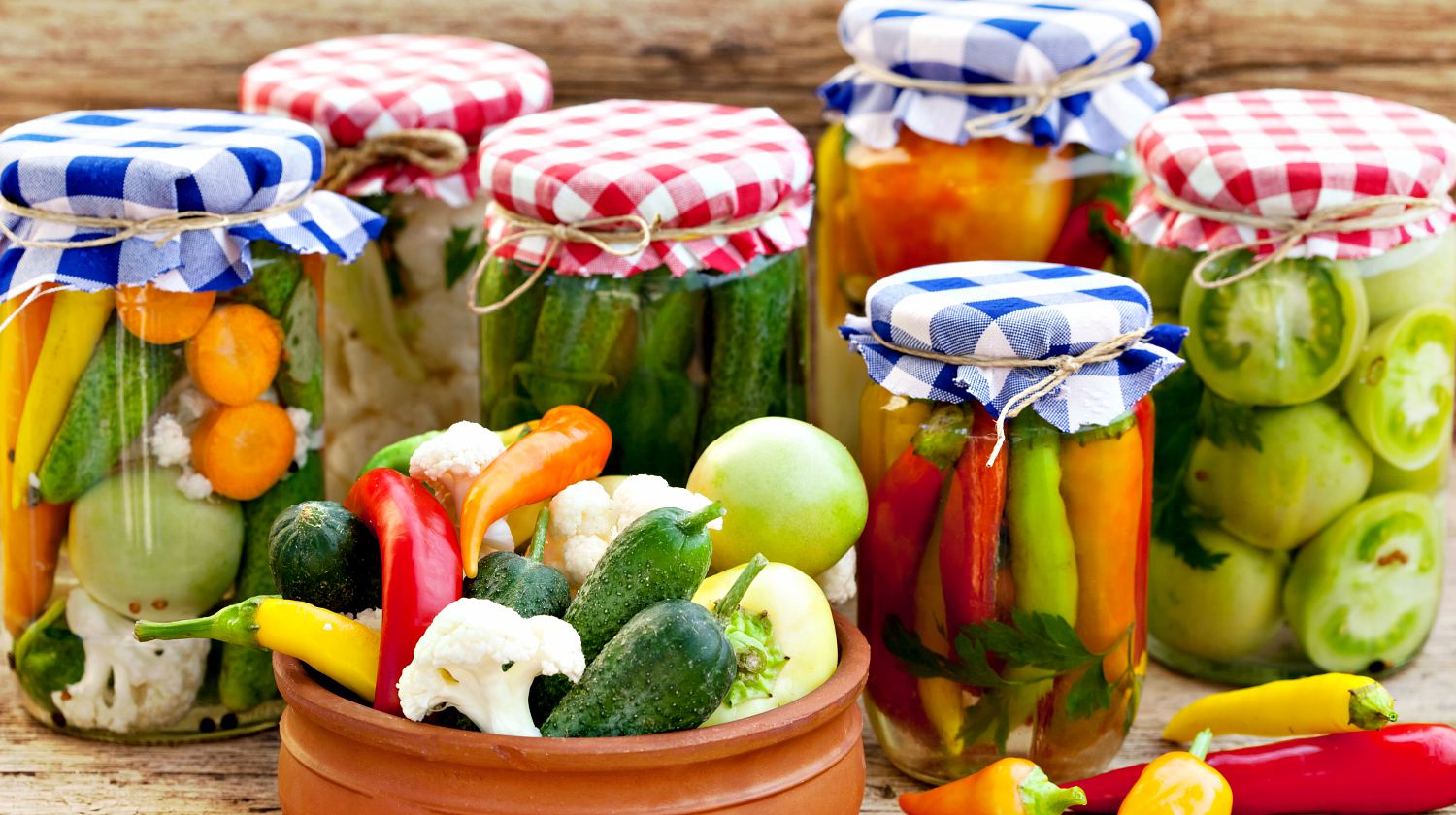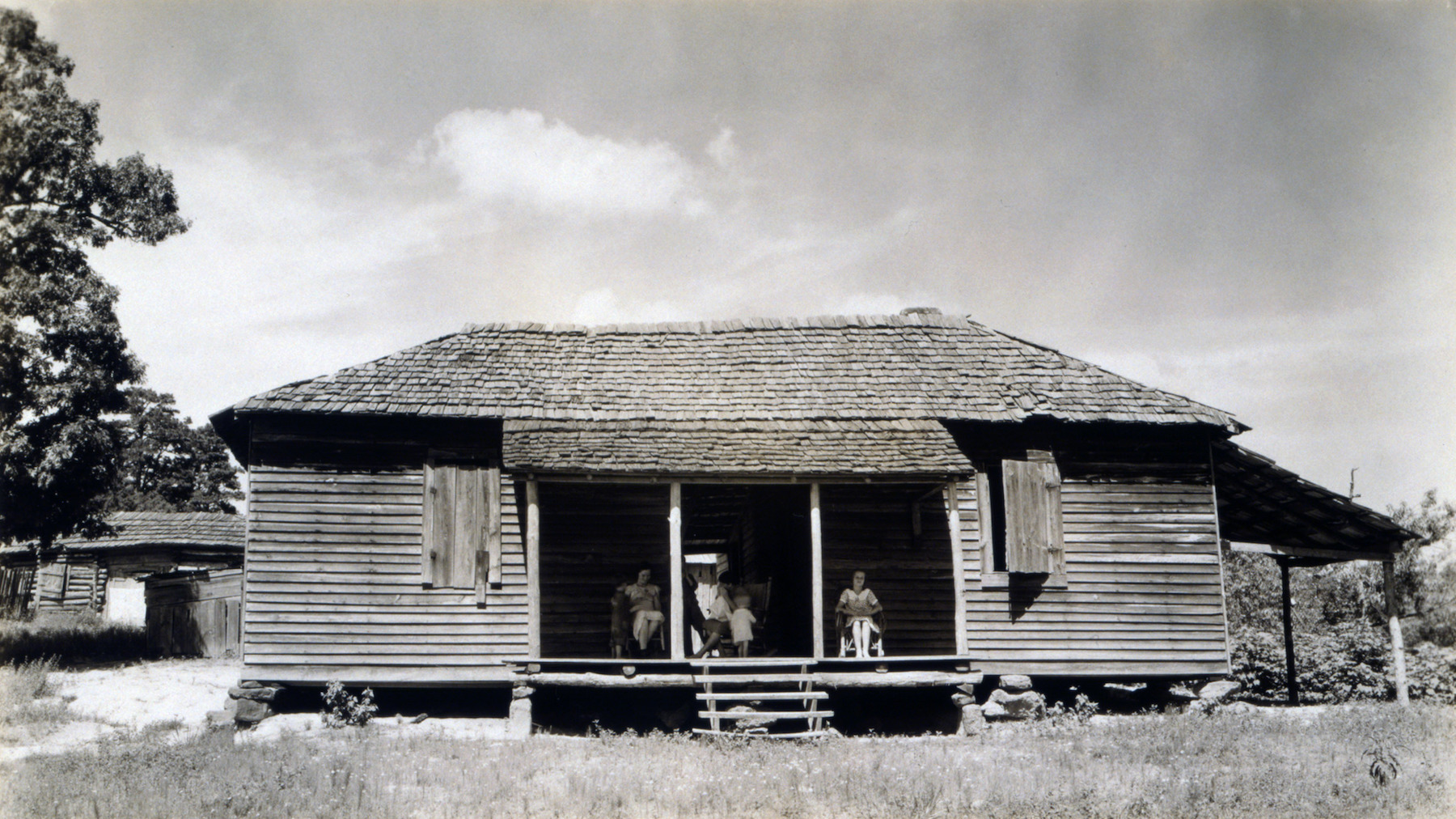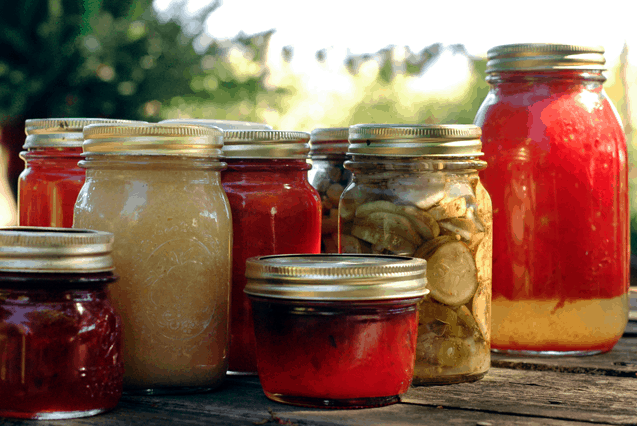Food Preservation
15 Canning Tips To Make Food Last For A Long Time

Take these tried-and-tested canning tips from the experts so you can get it right for your prepping and self-sufficiency needs!
RELATED: Canning Jar | How-To Guide To Canning
Canning Tips and Tricks for Self-Sufficient Preppers
Canning: A Must-Have Survival Skill
One of the essential skills for preparedness and survival is canning–preserving food through pressure cooking in containers. This way, you can save money and store food to last a long time for sure.
When faced with any SHTF scenario, you can rest assure you will have plenty to eat as long as you plan ahead.
We have already covered the basics of canning and the two most common methods. The materials needed for canning has also been discussed in a previous post.
Learning how-to can be a learning curve, but if you have the determination to get involved in this self-sufficiency skill, you will get the hang of it in no time. All you need to do is consider the benefits of canning to realize the time you put in is worth it indeed.
So, here are the nifty canning tips for quick and easier food preservation which will also let you take your skills to the next level.
1. Get a Good Book with Canning Tips
Well-Preserved: Recipes and Techniques for Putting Up Small Batches of Seasonal Foods by Eugenia Bone is the book for gourmand canners who care more about stocking your pantry with variety than quantity and for urban canners who think it’s cool to have a larder in Soho.
Put ‘Em Up! A Comprehensive Home Preserving Guide for the Creative Cook by Sherri Brooks Vinton is an inspiring resource for new canners and for folks who like to have pretty pictures along with exceptionally interesting canning recipes.
The Big Book of Preserving the Harvest: 150 Recipes for Freezing, Canning, Drying, and Pickling Fruits and Vegetables by Carol W. Costenbader is for you if you’re looking for a comprehensive canning guide with straightforward, easy-to-understand instructions.
The Joy of Pickling: 250 Flavor-Packed Recipes for All Kinds of Produce from Garden or Market by Linda Ziedrich will delight anyone who loves exploring the history and culinary traditions. Of course, pickle love is a must!
To read the full article click here.
2. From Start to Finish – Canning Should Be Organized
It’s important to stay focused during the whole process, to properly monitor the progress and not to forget an important step. Time is of the essence when it comes to this method of preserving food.
The object is to get the food processed as quickly as possible, from preparation to sealing, to reduce the risk of food deterioration which could affect the finished product.
Keep your guidelines handy for quick reviewing and always prepare to stay the course and finish the process. See more here.
3. Pectin Is a Great Canning Ingredient
According to Allrecipes.com, pectin–an essential gelling agent–is found naturally in many fruits, such as apples, plums, and oranges. Most canning recipes call for added pectin, in either liquid or powdered form; there are also special pectins available for making low-sugar preserves.
Jams and jellies made without pectin must be cooked longer, depending upon the amount of natural pectin in the fruit. When making jams and jellies, make sure to use the proper ratio of sugar, acid, and pectin to achieve the right texture and flavor.
4. Botulism in Home Canned Food: Less Common Than You Think
Botulism is a serious foodborne illness, but it is also exceedingly rare. Like shark attacks and plane crashes, the fear of botulism generates exaggerated anxiety which is out of step with the actual risk.
It may be calming to know, botulism is caused by improperly canned low-acid foods, such as fish, legumes, and vegetables. Acidity is the silver bullet against the bacteria which causes botulism, so high-acid foods—such as most fruit-based sweet preserves, vinegar pickles, and fermented vegetables—are safe from botulism risk.
Berkeley jam guru June Taylor says the only way you could hurt a person with a jar of jam is if you hit him in the head with it.
What Is Botulism? It is a potentially deadly illness anyone can get through food. It is caused by the toxins coming from the bacterium Clostridium botulinum.
5. Let the Canner Make the Syrup
When you’re preserving fruit, most methods require you to mix up a light to heavy syrup to add to the jars of fruit prior to the canning process. This entails measuring the sugar into water in a pot and heating it all up, hoping you didn’t make way too much or not enough, and dripping sugar-water everywhere while you’re filling your jars.
Why not make your job less sticky and have the perfect amount of syrup for your peaches, pears, cherries, and more by letting the canner make the syrup?
6. Prep Canning Tips
Check the pressure canner seals while you are getting it ready!
mrswages.com: If your pressure canner has any gaskets or seals which are dried out or cracked, replace them. This will help your canner hold pressure while you are processing the foods.
Take note also, the pressure saucepans are not meant to be canners and all recommendations will tell you not to use them as such.
7. Time and Energy-Saving Canning Tips
|
A pressure canner can save water time and energy!
Use your pressure canner to can applesauce, apple pie filling, and tomatoes, even though they can be water bath canned.
Using the pressure canner on 5lbs. of pressure greatly reduces time and energy when canning these foods, plus, it saves on water used. This is a plus in droughts or preparedness times when water is scarce indeed.
RELATED: Canning Like a Pro in 4 Quick & Easy Steps
8. Soup and Stew Canning Tips
Canning chili, stews or soup? Go easy on the seasonings!
Herbs and spices will strengthen over time, so go easy on them when canning especially spicy stuff. We recommend for you to avoid sage altogether, as it turns bitter during canning.
You might want to just add the seasonings to the dish as you’re reheating it before serving.
9. Green Bean Canning Tips
Adding ingredients like ham or bacon to green beans is not safe!
Make sure to can green beans adding only Mrs. Wages Canning salt if you add anything. You may also pack green beans either raw or hot.
Either way, pack the beans tightly into the jars and add salt as desired. Fill the jar to within 1-inch with boiling water and remove air bubbles.
Wipe off the jar rims and process at 11 pounds in a dial gauge canner or 10 pounds in a weighted gauge canner 20 minutes for pints and 25 minutes for quarts.
10. Canning Tips for Newbies: Start with Small Batches
If you’re just getting started, work in small batches—just two or three pounds of fruit or vegetables at a time. A small batch is easier to manage, quicker to make, and more economical.
And if the recipe doesn’t work (which is unlikely), there’s less heartbreak involved in a small failure. Besides, how much strawberry jam or corn relish can anyone use? You’re not stocking a bomb shelter, just yet.
Here’s what you need to know if you a beginner on canning in small batches.
11. More Soup and Stew Canning Tips
|
For soups, stews, and chili: Skip the pasta and rice when canning.
Or at least put in very little when making stuff like chicken noodle soup. Also, you don’t want to cook noodles or rice before processing them in the canner, or they’ll turn to mush.
Instead, make your soup base, fill your jars, then add a tiny bit of raw noodles or rice, then proceed with canning. Better yet, just leave them out and add them to the soup as you reheat it.
The problem with adding too many noodles is the soup can get very thick in the center of the jar, which won’t get heated adequately during the canning process. You risk food poisoning, even botulism if you haven’t heated the contents of the jar well enough.
If you absolutely have to add the pasta, go easy on it.
More tips from the source here.
12. Yes, the Family Can, Can!
Melissa K Norris says, Enlist the help of children and family, even small kids. Explain why you need help and how this food will help feed them throughout the winter months and money.
It creates a family bond and a sense of accomplishment with the children. We snap our beans together as a family and makes the workload less on me.
Kids feel a sense of ownership when they help grow and prepare the food themselves and don’t fuss when it comes to eating their veggies.
13. Three F’s in Canning: Freeze Fish First
If you want to can smoked salmon, freeze the fish first. Frozen fish accepts the brine better than fresh. See here for more.
Here’s a nicely and thoughtfully done video from a fellow prepper, Perbain, on canning fish:
14. Safety Tip: Don’t Leave Jars of Food in the Canner Overnight
If you live at a higher altitude, charts for adjusting the pressure are available in canning books or from your local Extension Office.
Remember, the only SAFE way to process low-acid foods (which are all vegetables, meats, and vegetable mixtures) is by using a pressure canner. This is because of c. botulinum toxin, which is present in low acid foods.
You will only destroy C. Botulinum at temperatures above 212°F. which you can also only achieve in a pressure canner.
Now I know some of you will say your oven reaches temperatures higher than this BUT the oven does not remove air from the jars, which is necessary to prevent botulism toxin from growing. Only pressure does this.
Any way you look at it, you cannot safely can corn, green beans, or any other vegetable without a pressure canner. Period. Other methods are very risky and can result in botulism poisoning which attacks the central nervous system and can cause death. Read the full post.
15. More Canning Tips in This Video from Proudly Northumberlan
We can safely say, canned foods are among the quintessential survival foods, especially in an SHTF situation. Yet, whether it’s a dire survival situation or a commonplace one, canning or the skills in canning is essential indeed!
In this video Starry share her tips in food storage and canning from Simply Starry Sustainable Living With God:
We are aware these canning tips and tricks are not the be-all and end-all of canning. So, if you know or have just discovered some tricks to make the experience better, faster or safer as well as making the food more delicious, let us know about them in the comments section below!
Up Next:
- 8 Must-Have Canning Supplies Every Homesteader Needs
- 12 Survival Foods That Will Save You In A Power Outage
- The Do’s And Don’ts Of Beagle Hunting – Training For The Hunt
Make sure your survival gear is fully stocked with the latest and check out the Survival Life Store!
Follow us on Facebook, Instagram, Twitter, Pinterest, and Tumblr!
***Disclaimer: The contents of this article are for informational purposes only. Please read our full disclaimer.***
Editor’s Note: This post was originally published on November 7, 2014, and has been updated for quality and relevancy.
-

 Do It Yourself7 months ago
Do It Yourself7 months agoParacord Projects | 36 Cool Paracord Ideas For Your Paracord Survival Projects
-

 Do It Yourself9 months ago
Do It Yourself9 months agoHow To Make Paracord Survival Bracelets | DIY Survival Prepping
-

 Do It Yourself9 months ago
Do It Yourself9 months ago21 Home Remedies For Toothache Pain Relief
-

 Do It Yourself10 months ago
Do It Yourself10 months agoSurvival DIY: How To Melt Aluminum Cans For Casting
-

 Exports8 months ago
Exports8 months agoAre Switchblades Legal? Knife Laws By State





Nora Marginean
November 26, 2014 at 11:56 AM
Wonderful post M
cmac
November 26, 2014 at 12:00 PM
It is possible to can vegetables with meat seasoning such as ham or bacon in them but it is not advisable. To safely do so you have to process the vegetables as if they were meat (at least double the processing time) which degrades the quality of the veggies and can destroy nutrients.
Regina
November 26, 2014 at 1:55 PM
I’ve been disgusted with the number of beans in a can of beans, so I started buying 2 lbs of my favorite dry beans, which makes enough for dinner plus a pressure canner load of beans. If you plan ahead overnight by soaking dry beans, and as you said so accurately, get organized, this takes less time than making weeknight supper.
Pingback: Prepper Pantry 3 Month Recipes For Salmon | Extreme Survival Guide
hillary
January 9, 2015 at 5:26 PM
Question. I saw a show on TV where they stacked small canning jars on top of each other while pressure canning. I’ve never heard of this. It would save time. Is this ok to do?
Verna
August 22, 2016 at 9:06 AM
Yes as long as you use a rack like you put in the bottom between them, or you stagger them so they are not directly on top of the bottom jar.
Pingback: Cool DIY Homesteading Projects For a Simpler Life
Pingback: Home Canning Supplies - The Equipment Essentials | Survival Life
Pingback: 39 Hobbies That Make Money | Iwantings|Article, media, sports, TV, conversations &more
Louella J Smith
July 24, 2018 at 2:02 PM
I have always had problems getting my jams to setup. I ended up with a lot of syrup for ice-
cream. lol My neighbor gave me some Gornaby’s Ultra Gel – it is gluten free and non GMO. I just add a little in addition to the pectin, I now make wonderful Berry Jam. I grow my own berries and we now have jam instead of syrup.
Pingback: Canning Jar | How To Guide To Canning | Survivallife
Pingback: Canning Jar | How To Guide To Canning | Primitive technology
Pingback: Canning Jar | How To Guide To Canning | Life Off The Grid
Pingback: Canning Jar | How To Guide To Canning - Survival Patch
Pingback: Canning Jar | How To Guide To Canning - Survive!
Pingback: End poverty through hobbies and solve real world problems - HobbyTwin
Pingback: End poverty through hobbies and solve real world problems - HobbyTwin
Pingback: 100 Dollar Store Prep Ideas To Stockpile Now – The Self-Sufficient Life
Pingback: 100 Dollar Store Survival Preps To Stockpile Now – The Survival Pro
Pingback: 100 Dollar Store Survival Preps To Stockpile Now - Cooking in Quarantine
Pingback: 100 Dollar Store Prep Ideas To Stockpile Now - survival updates